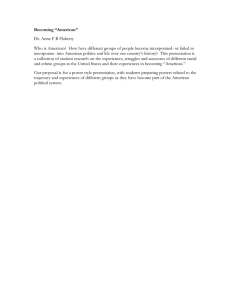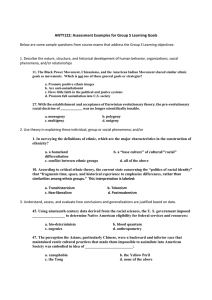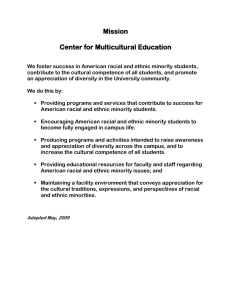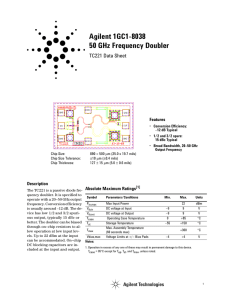Race_ _Ethnicity_ Article Questions.pdf
advertisement
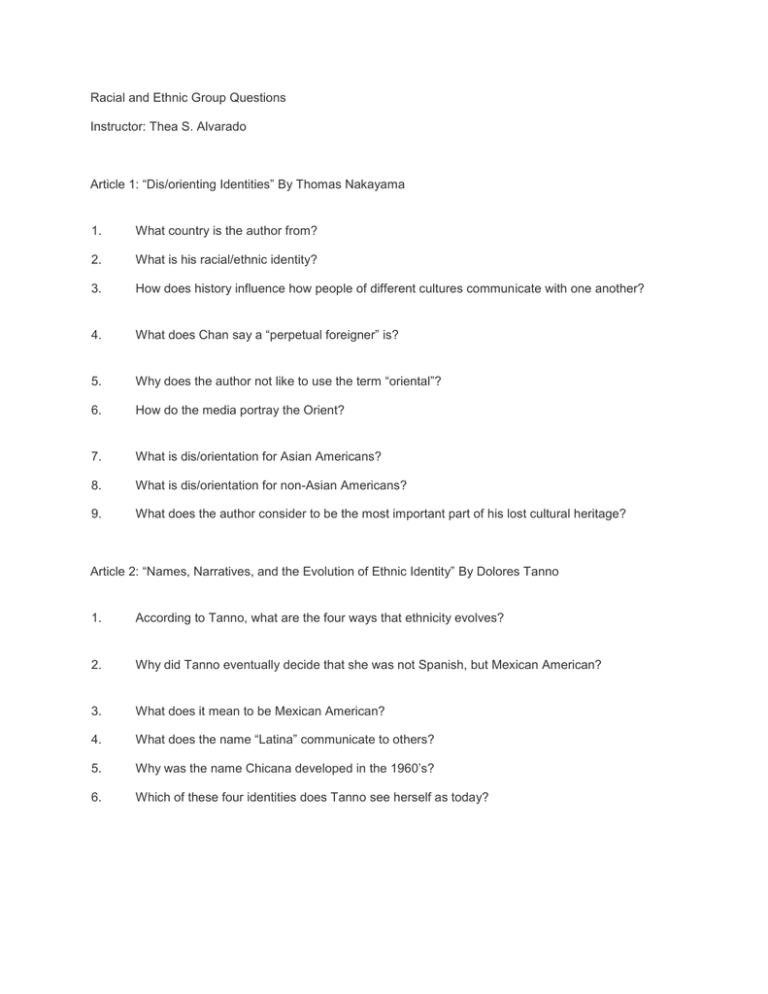
Racial and Ethnic Group Questions Instructor: Thea S. Alvarado Article 1: “Dis/orienting Identities” By Thomas Nakayama 1. What country is the author from? 2. What is his racial/ethnic identity? 3. How does history influence how people of different cultures communicate with one another? 4. What does Chan say a “perpetual foreigner” is? 5. Why does the author not like to use the term “oriental”? 6. How do the media portray the Orient? 7. What is dis/orientation for Asian Americans? 8. What is dis/orientation for non-Asian Americans? 9. What does the author consider to be the most important part of his lost cultural heritage? Article 2: “Names, Narratives, and the Evolution of Ethnic Identity” By Dolores Tanno 1. According to Tanno, what are the four ways that ethnicity evolves? 2. Why did Tanno eventually decide that she was not Spanish, but Mexican American? 3. What does it mean to be Mexican American? 4. What does the name “Latina” communicate to others? 5. Why was the name Chicana developed in the 1960’s? 6. Which of these four identities does Tanno see herself as today? Article 3: “I Know It Was the Blood” By Tina Harris 1. Which races/ethnicities compose the author’s multicultural background? 2. Harris says that “American society uses a dichotomous approach to cultural diversity”. What are the two sides of America’s cultural diversity? 3. How does the author define culture? 4. What does the author say is the purpose of race? 5. What are the two primary internal processes of cultural identity? Describe each. 6. How is the responsibility of parents different in a bicultural home? 7. If parents do not teach their children about their cultures, what is the result? Article 4: “Struggling for Identity: Multiethnic and Biracial Individuals in America” By Mona Freeman Leonard 1. What is the “one drop” or code noir rule? 2. When U.S. law first defined who was in which racial category, what were these boundaries based on? 3. Why did the author’s family decide to identify as African American rather than as Native American? 4. What is “passing”? 5. How does the author define culture?

